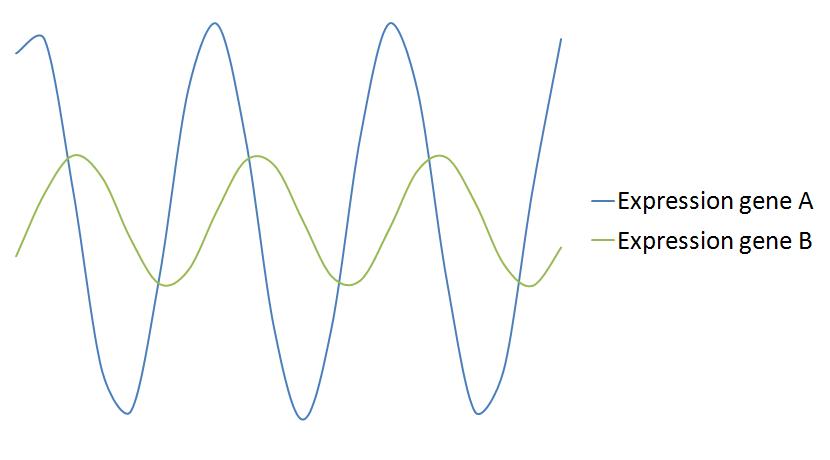Team:Wageningen UR/Project/Applications
From 2011.igem.org
(→Synchroscillator: Possible Applications) |
(→Synchroscillator: Possible Applications) |
||
| Line 30: | Line 30: | ||
Using the oscillating system, it is possible to have gene A oscillating and at the same time look at what happens to the other genes B, C & D through time. If it appears that gene B shows changes in its expression level pattern or protein concentration pattern and genes C & D do not show a difference compared to the normal situation whilst gene A is oscillating, it means that there is hard evidence for the fact that gene A is interacting with gene B and not with gene C & D. | Using the oscillating system, it is possible to have gene A oscillating and at the same time look at what happens to the other genes B, C & D through time. If it appears that gene B shows changes in its expression level pattern or protein concentration pattern and genes C & D do not show a difference compared to the normal situation whilst gene A is oscillating, it means that there is hard evidence for the fact that gene A is interacting with gene B and not with gene C & D. | ||
| - | As there are some genes that cannot be knocked out, because without it the organism cannot survive, the use of | + | As there are some genes that cannot be knocked out, because without it the organism cannot survive, the use of knockouts is limited. The oscillating system can get the expression level of a crucial gene E very low at certain time points while it makes up for the loss at other time points where it is over-expressed. This means that, by looking at changing expression patterns of other genes over time, it is possible to get interactional information for gene E that until now was very hard to study. |
Next to that, using the oscillating system, it would be possible to look at rates of interaction between genes. Imagine that gene B is regulated by gene A, which is oscillating. If the interaction speed between A & B would be extremely fast, it might be possible that gene B starts oscillating together with gene A. There should be a delay however. By looking at this delay and the resulting pattern of gene B, conclusions can be drawn about the rate of interaction between both genes. The following figure illustrates what it could look like: | Next to that, using the oscillating system, it would be possible to look at rates of interaction between genes. Imagine that gene B is regulated by gene A, which is oscillating. If the interaction speed between A & B would be extremely fast, it might be possible that gene B starts oscillating together with gene A. There should be a delay however. By looking at this delay and the resulting pattern of gene B, conclusions can be drawn about the rate of interaction between both genes. The following figure illustrates what it could look like: | ||
Revision as of 03:05, 22 September 2011
 "
"



